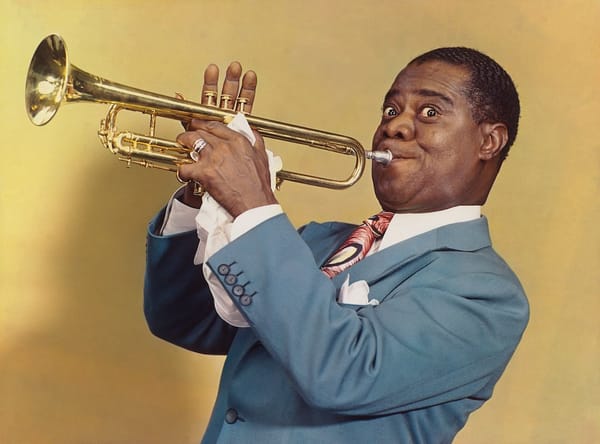Lock, Stock and Music
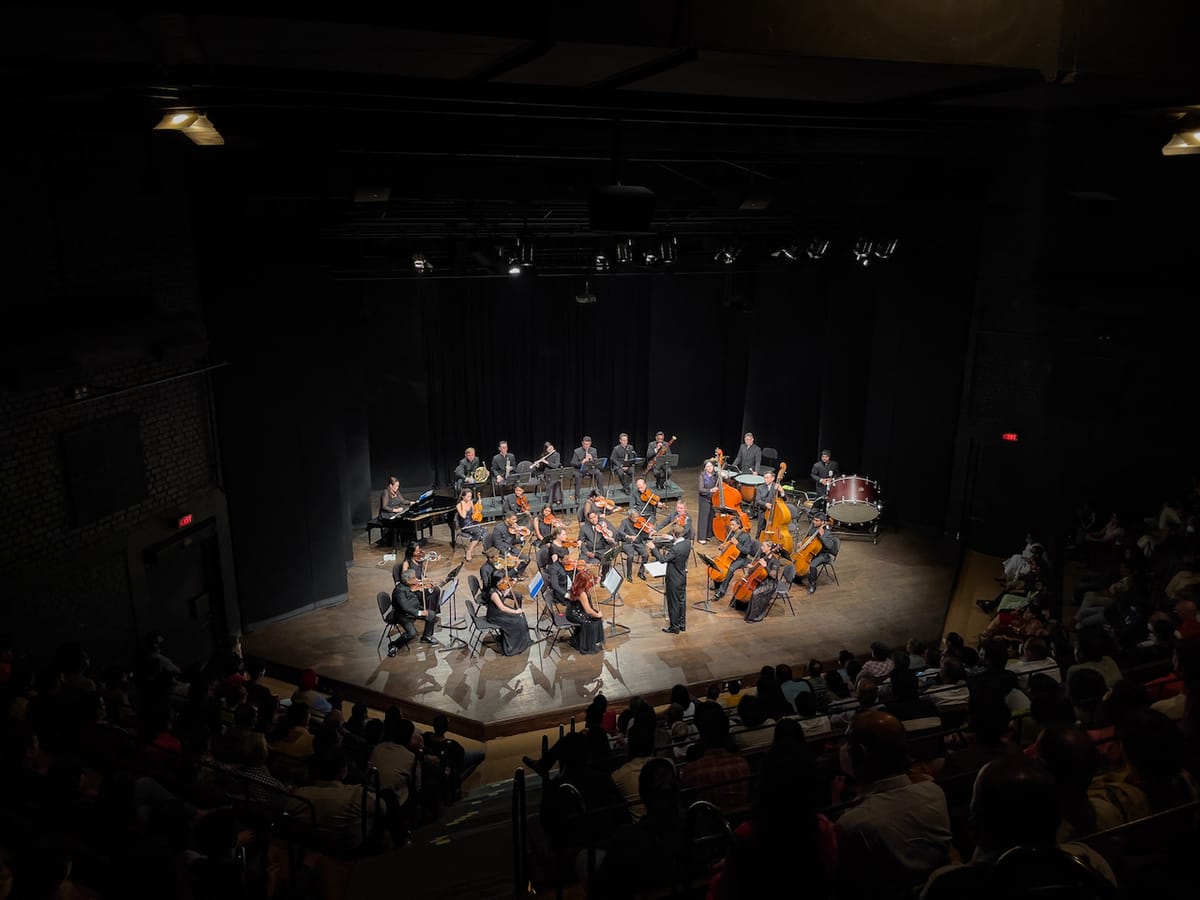
The SOI Chamber Orchestra’s recent tour to Bengaluru and Chennai travelled beyond packed concert halls to reach aspiring young musicians and newer audiences, and created a lasting impact.
As if to finish a melody that started two years ago, the SOI Chamber Orchestra was recently back in Bengaluru to fill the room with music and cheer like they did during their last national tour in early 2020. The vibrant Ranga Shankara theatre had witnessed what was to be the orchestra’s last performance—on tour and otherwise—in a world unbeknownst to the ways of a pandemic. It only seemed right for the first performance of the 2022 tour, then, to take place on the same stage; it was a homecoming, away from home.
A happy reunion
The SOI Chamber Orchestra, along with Resident Conductor Mikel Toms, set out on a tour through the cities of Bengaluru and Chennai over five eventful days. Unlike previous tours, this one was distinctive in more ways than one. Away from the conventional itinerary of concerts alone, the tour also managed to pack in workshops, masterclasses, concerts for young audiences, and needless to say, rehearsals. In the wee hours of 16th June, the team left for the first leg of the tour in Bengaluru.
Workshops and masterclasses with teachers and students at The Bangalore School of Music, masterclasses at the VioVoi Music Academy, an evening of chamber music at the Bangalore International Centre and spectacular concerts at Ranga Shankara—including some for young people— unfolded over three days. The city welcomed Mozart and Beethoven with open hearts and thunderous applause. The concert in Chennai at Sir Mutha Venkatasubba Rao Concert Hall as well as the workshops and performances at the Musée Musical were met with great enthusiasm.
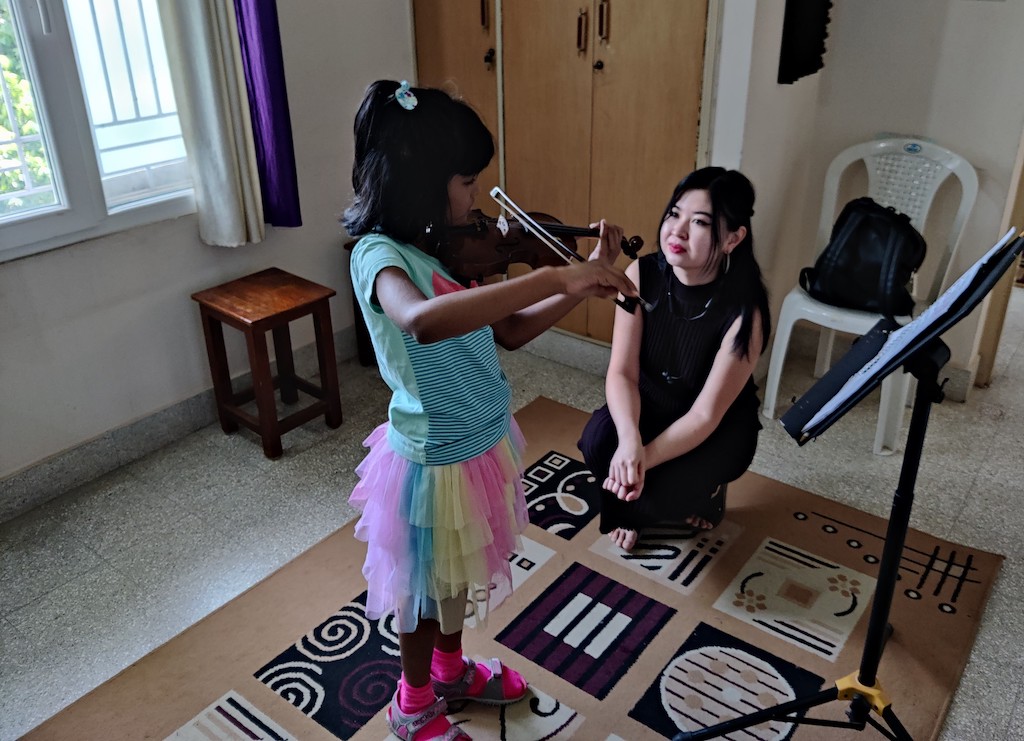
Xerxes Unvala, General Manager – SOI & Western Classical Music, explains what went into planning and executing the ambitious tour. “We tried to structure the tour more like a mini residency this time in contrast to a concert tour where an orchestra would typically show up in the morning, give a concert and leave the next day. The objective was to leave behind more of an impact and reach out to the community by doing a little bit of everything we do here in Mumbai. This is a model that we would like to follow for our future tours as well,” he says.
Unvala elaborates on the educational facet of the tour:
“Being the only full-time professional orchestra in India today, it is also important for us to widen our reach within the country with not only concerts but more significantly, education. We want to help local institutions that are trying to do good work in Western classical music around the country.”
The concerts featured works of Mozart, Beethoven, Debussy, Bizet and more. Highlights included the Overture to The Marriage of Figaro and the “Pastoral” Symphony, which left audiences mesmerised and moved in equal measure.
A culture of appreciation
Toms says that the repertoire to be presented is often decided long in advance. “We want our programmes not only to be fresh and accessible for new audiences but we also want them to feel challenged, transported and inspired. Travelling with a relatively small-size orchestra, I spend a lot of time arranging and re-orchestrating the works so that they can be performed by a chamber orchestra while remaining true to the composers’ vision,” he adds. “Once we get to the rehearsal stage, we spend a great deal of time familiarising ourselves with every detail. For this series of concerts, we had not toured together as an orchestra for over two years. We also needed to familiarise ourselves with each other and get used to working as an ensemble again. The secret to great orchestral performances is to sound and perform as a single, unified body of players and after so long apart, this takes time and energy. When it all comes together, though, it’s hugely rewarding and I know audiences appreciate it.”
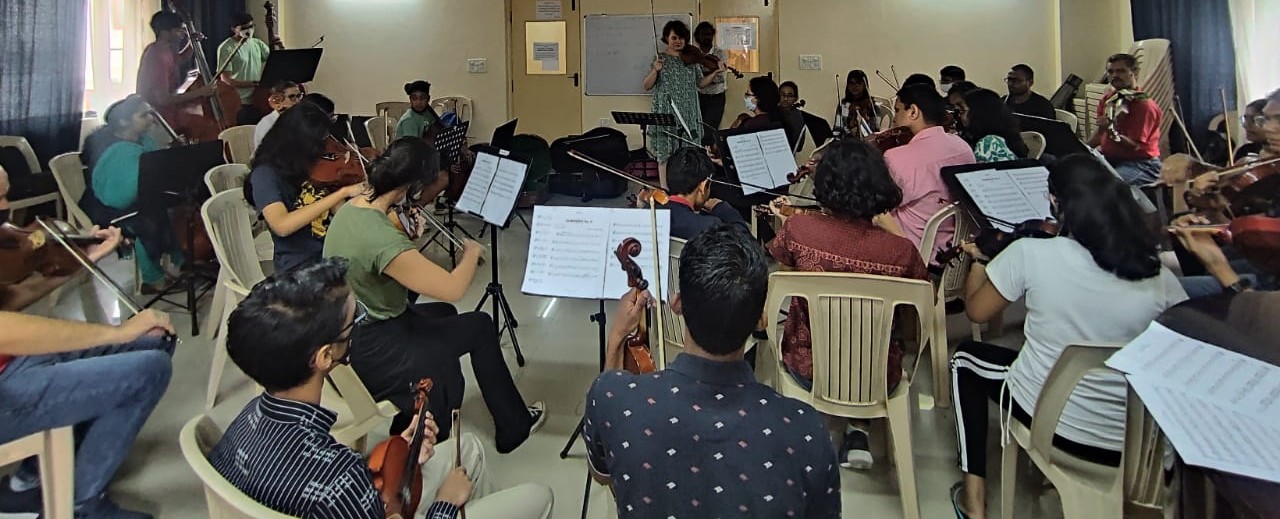
The performances in March of 2020 at Ranga Shankara were hoped to be the beginning of a regular collaboration. Founder and Artistic Advisor Arundhati Nag talks about what it meant to reunite after the hiatus. “The concerts were electric. I had tears in my eyes. What the NCPA is doing is setting a benchmark, and only this organisation could have done it. We wanted to bring this experience to Bengaluru for the longest time. There is a huge gap between those who get to listen to live music and those who don’t. Western classical music, then, becomes even more difficult to access as it may limit itself to a certain section of society. Ranga Shankara is about making excellence available irrespective of what size one’s pocket is and also sharing it with children. Bringing such concerts to Bengaluru with a sense of regularity is about audience development,” says Nag.
She elaborates, “The NCPA has gone about it the right way. Education is desired in this area. One finds traces of Hindustani music in popular film music genres, but Western classical music is a very different sound for us. It has surely been around us; even Salil Chowdhury often turned to Mozart. But I hope an active culture of appreciation is cultivated.” Arun Rozario, Director and Co-Founder of the VioVoi Music Academy, appreciates the addition of masterclasses to the tour. “Our expectation for students who take part in these masterclasses is for them to understand that they do not exist in a bubble, that there is a thriving future in music and we are willing and capable of giving them experiences like these to help them get there,” he adds.
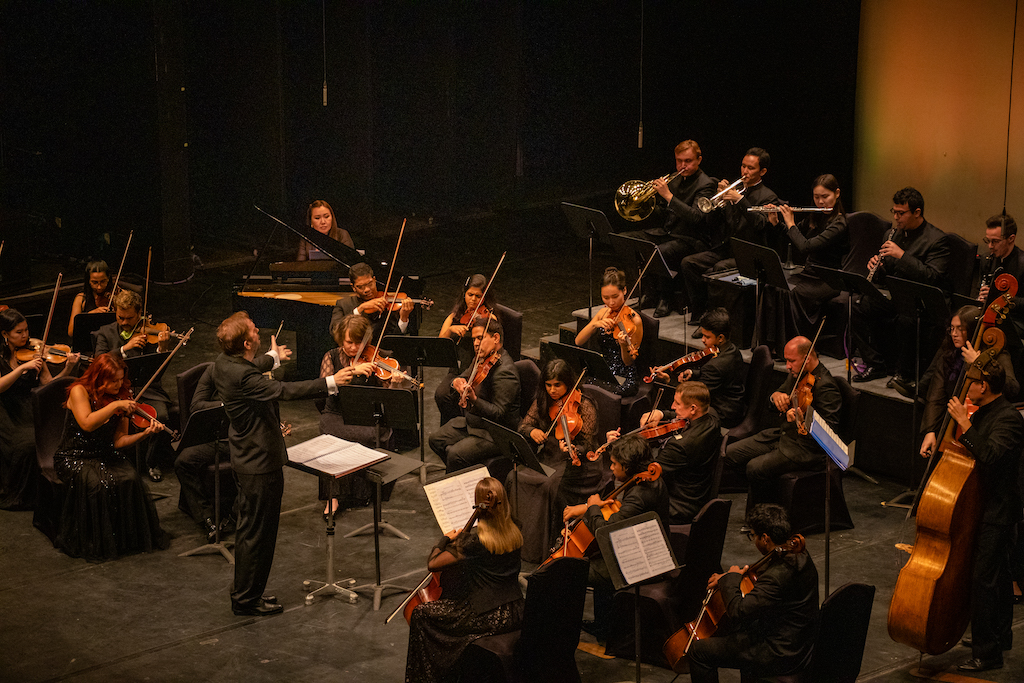
Adventures on the side The first tour after a long period of uncertainty ought to be as gratifying for the musicians as it turned out to be for the audiences. Forty people— not to forget the instruments—making a journey together for music builds memories for a lifetime. The larger instruments, like the timpani and the double basses, were sent by road from Mumbai to Bengaluru, packed immediately after the last event of the first leg, and driven through the night, ready to be played again in Chennai the next day. It indeed takes a village to put together a show.
A tour such as this also demands great commitment and zeal from the musicians. Cellist Margarita Gapparova rightly puts it. “When you are on tour, you have to look at it like you are working 24 hours a day. It’s not a holiday, it’s like you are going to live in the office for several days.” However, the challenges and how they are overcome makes for great stories later, the most amusing of which on this tour was the breakdown of the bus which left them stranded by the side of a busy highway in Bengaluru at five in the morning, on the way to the airport. Thanks to some quick thinking on the team’s part, no one missed the flight.
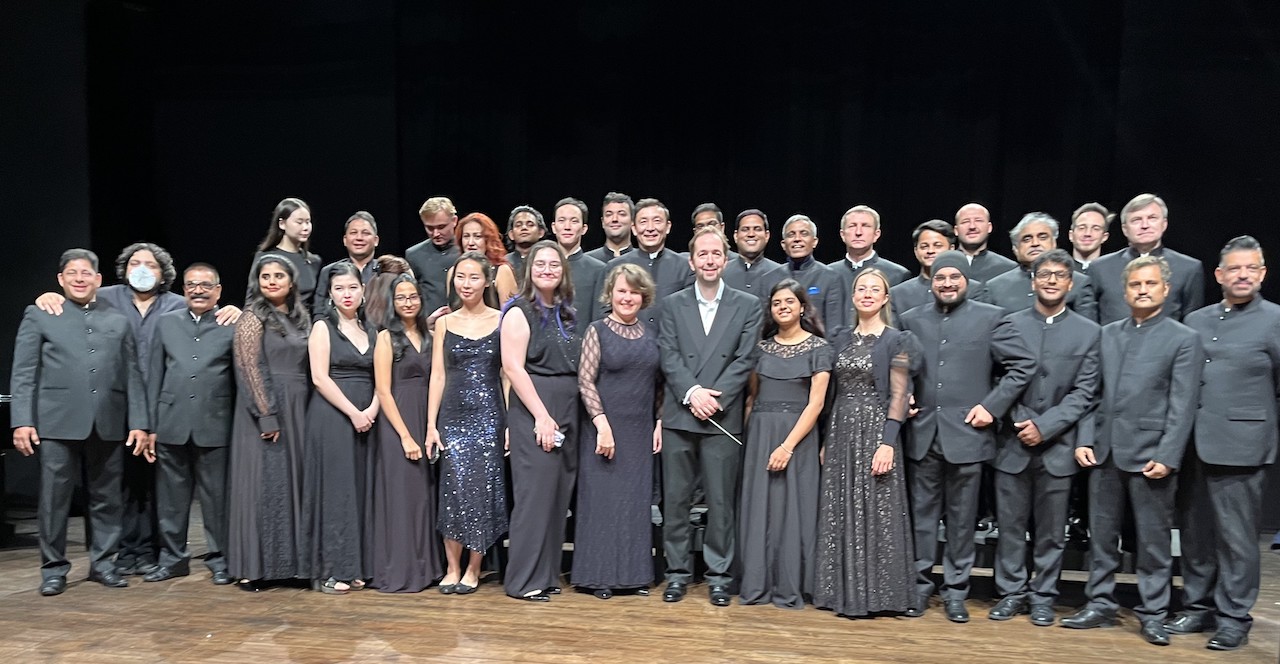
Gapparova also recalls how she had to step up and take a position of leadership when a colleague could not be a part of the tour. Violinist Deon D’Souza says that he vividly remembers meeting a talented young student with little training, who left him in awe at a masterclass. In fact, much like the chamber music concerts in Mumbai, where students of the SOI Music Academy occasionally play with the orchestra, two senior students, Nyra Jain and Tivona D’Souza Murphy, were a part of the tour as members of the orchestra. For violinist Olga Lyapina and double bass player Bakir Utepbergenov, watching them play at the concerts was a moment of pride. Unvala fondly talks about 250 schoolchildren storming onto the stage at the end of a concert for young audiences and dancing to the tunes of tango. Toms recollects valiant efforts to tie up his shirt sleeves with string and paper clips to replace a missing cufflink three minutes before going onstage. But the greatest joy, he reiterates, is every moment spent onstage, exchanging the exuberance of live music with an audience.
By Aishwarya Bodke. This piece was originally published by the National Centre for the Performing Arts, Mumbai, in the August 2022 issue of ON Stage – their monthly arts magazine.





